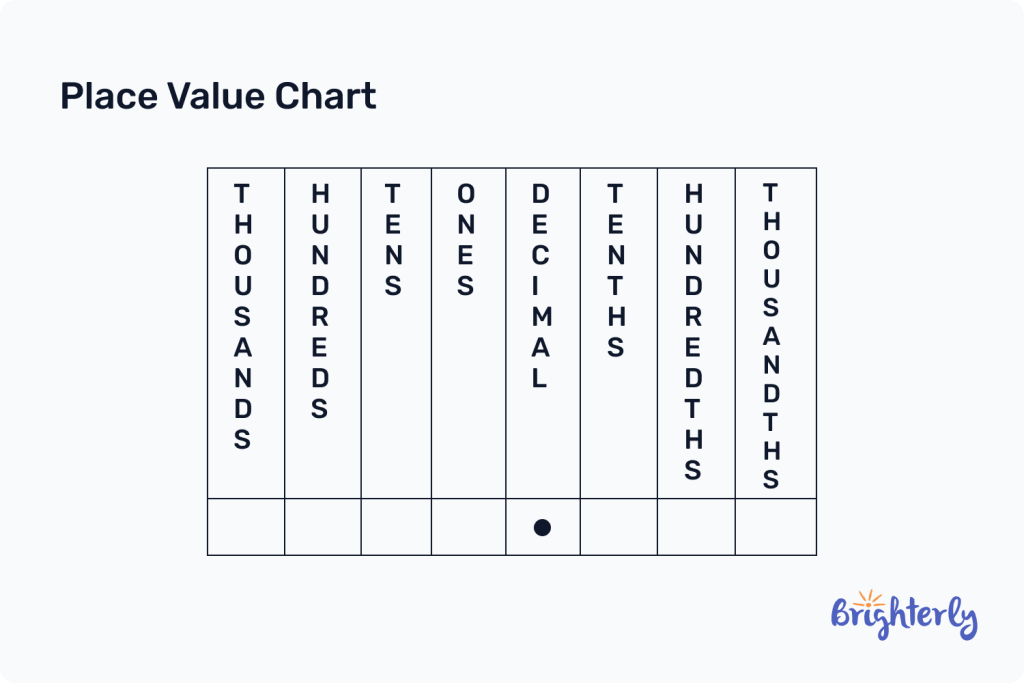Expanded Form – Definition, FAQs, Practice Problems, Examples
reviewed by Jo-ann Caballes
Updated on July 15, 2025
Welcome to Brighterly, where we’re passionate about helping you learn all sorts of math concepts.
Today, we’re going to look into a key method of expressing numbers: expanded form.
Here, we’ll cover the expanded form meaning and examples, how to write numbers in expanded form, expanded notation and expanded notation examples. We’ll also share practice test questions and math worksheets so you can put your knowledge to the test!
What is an expanded form?
Expanded form in math is a way of expressing numbers. In order to understand standard form, it’s important to grasp place value, because that’s how we represent numbers in expanded form. You may have heard of both standard form and expanded form, and standard form is the representation of numbers as they are – i.e. 283 is represented as 283.
We define expanded form fully below.
Expanded form definition
The definition of expanded form is expressing numbers as the sum of the place value of their digits. This means we break numbers up by their place values.

Expanded form example
Let’s use an example of a number in expanded form. For the number 395, we would break it down into its place values:
- Hundreds place: 300
- Tens place: 90
- Ones place: 5
Therefore, 395 in the expanded form is 300 + 90 + 5.
Place value expanded form
Place value is core to learning how to use expanded form. Place value is where each digit is in your number and what ‘place’ that represents. The number 12 has two place values – tens and ones. Meanwhile, larger numbers like 2480 have more place values – thousands, hundreds, tens and ones. To use the expanded form, you need to isolate each digit in its place value.
You can see how we use place value in this expanded form chart:

How to write numbers in expanded form?
To write numbers in expanded form, you break the numbers down to their individual place values. This means if you have a 3 in the hundreds place, for example, part of your expanded form would be 300. You do this for every place value, and you’ll be left with numbers that are multiples of each place value.
As expanded form examples, 1493 would become 1000 + 400 + 90 + 3. Each number is a multiple of its place value (thousands, hundreds, tens, ones).
Writing numbers in expanded form
Writing numbers in expanded form means writing down the value of each digit, whether it’s in the hundreds, tens, ones or other places. For each digit to the right, your place value goes up to the power of 10.
Expanded form of decimal numbers
We can write decimal numbers in expanded form too. We simply represent each part of the decimal by its place value. For example, 1.496 becomes 1 + 0.4 + 0.09 + 0.006.

What is expanded notation?
Expanded notation is related to expanded form math, but there’s an extra step involved. Instead of just representing each digit as its place value, we show each digit as a multiplication of its face value. As an expanded notation method example, where 281 in expanded form would be 200 + 80 + 1, in expanded notation it would be (2 x 100) + (8 x 10) + (1 x 1).

Solved examples on expanded form
Ready to test yourself now that you’ve learnt all about expanded form math? Try out our solved math tasks and check your answers to see how many you’ve got right!
Solved math task 1
Write 2947 in its expanded form.
Answer:
| 2000 + 900 + 40 + 7. |
Solved math task 2
Write 392 in expanded notation.
Answer:
| (3 x 100) + (9 x 10) + (2 x 1). |
Solved math task 3
Write 28194 in its expanded form.
Answer:
| 20000 + 8000 + 100 + 90 + 40. |
Practice problems on expanded form
Expanded form: worksheets
The best way to become an expert in a math concept is by practicing. Try out our fun puzzle-filled math worksheets to improve your knowledge of expanded form math!
- Place value worksheet 3rd grade
- Expanded form worksheets
- Expanded notation worksheets
- Expanded form worksheets 2nd grade
Frequently asked questions on expanded form
What is the purpose of writing numbers in expanded form?
Writing numbers in expanded form can help us better understand the make-up of numbers. Particularly with larger numbers, it breaks them down and makes them easier to understand. For example, 34802 might be difficult to read but is easier to comprehend when broken down as 30000 + 4000 + 800 + 2.
How do you write numbers in expanded form?
To write numbers in expanded form, you need to write each digit in your number as a multiple of its place value. In other words, you’re breaking numbers into their place values. For example, 921 is 900 + 20 + 1.
Can expanded form be used for decimal numbers?
Yes, expanded form can be used for decimal numbers too. It works in the same way as whole numbers – you simply express the digits in your decimal number as their place digits – i.e. tenths, hundredths, thousandths, etc. For example, 12.928 becomes 10 + 2 + 0.9 + 0.02 + 0.08.







